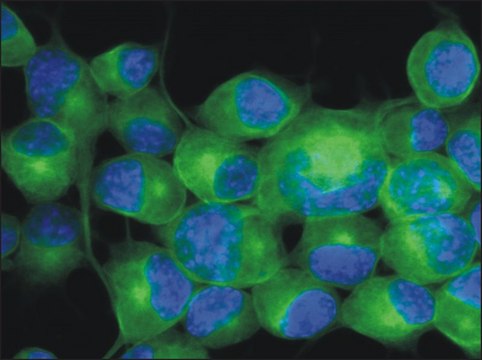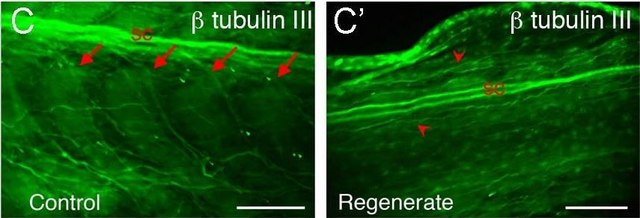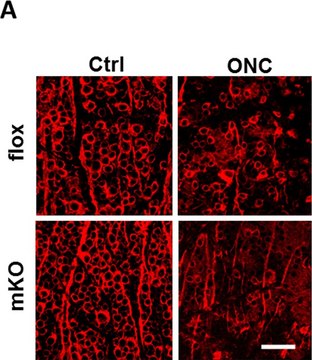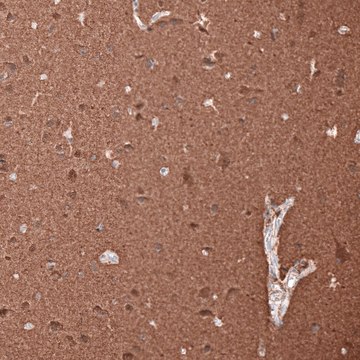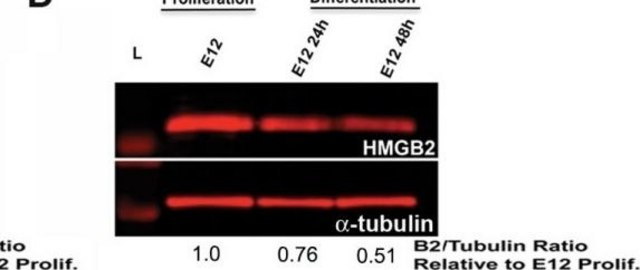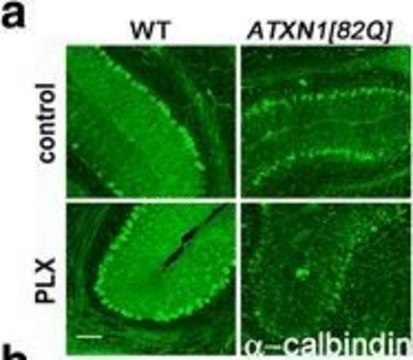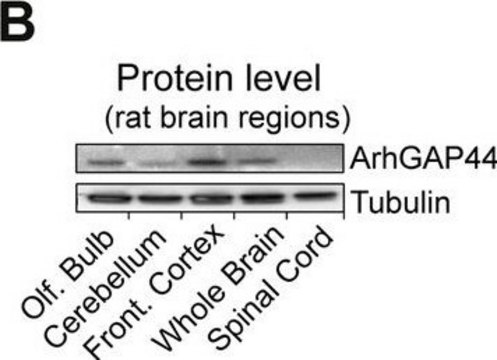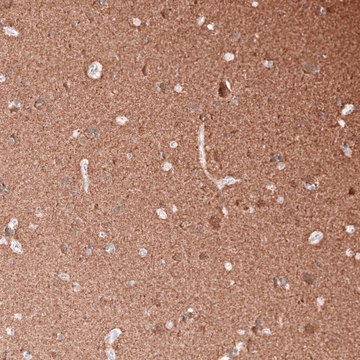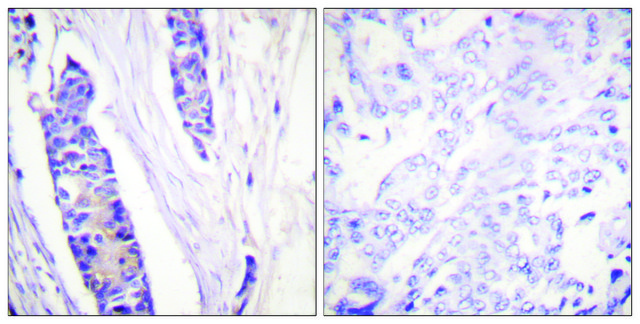SAB3300047
Monoclonal Anti-TUBB3 antibody produced in mouse
clone 5H2, purified immunoglobulin, buffered aqueous glycerol solution
Sign Into View Organizational & Contract Pricing
All Photos(1)
Synonym(s):
Anti-β-4, Anti-MC1R, Anti-TUBB4
UNSPSC Code:
12352203
Recommended Products
biological source
mouse
conjugate
unconjugated
antibody form
purified immunoglobulin
antibody product type
primary antibodies
clone
5H2, monoclonal
form
buffered aqueous glycerol solution
mol wt
antigen 50.3 kDa
species reactivity
human
technique(s)
western blot: suitable
NCBI accession no.
UniProt accession no.
shipped in
dry ice
storage temp.
−20°C
Gene Information
human ... TUBB3(10381)
Immunogen
Recombinant protein expressed in E. coli corresponding to amino acids 1-150 of human TUBB3
Target description
Tubulin is the major building block of microtubules. This intracellular cylindrical filamentous structure is present in almost all eukaryotic cells. Microtubules function as structural and mobile elements in mitosis, intracellular transport, flagellar movement, and the cytoskeleton. Except in the simplest eukaryotes, tubulin exists in all cells as a mixture of similar, but not identical, sets of alpha and beta tubulin polypeptides. Within either set of polypeptides, individual subunits diverge from each other (both within and across species) at less than 10% of the amino acid positions. The most extreme diversity is localized to the 15 residues of the carboxy terminal. For β-tubulin five evolutionarily conserved isotype clones have been identified. These are almost totally conserved in the subunits utilized in the same cell types of different species, with the exception of the hematopoietic β-tubulin which is the most highly divergent in sequence and is not conserved between species. Research has been centered around the hypothesis that these beta tubulin isotypes contribute to unique functional properties. It has been reported that the different isotypes of tubulin differ from each other in their ability to polymerize into microtubules.
Physical form
Solution in phosphate buffered saline containing 1% bovine serum albumin, 50% glycerol, and 0.02% sodium azide.
recommended
Product No.
Description
Pricing
WGK
WGK 2
Flash Point(F)
Not applicable
Flash Point(C)
Not applicable
Regulatory Information
含少量动物源组分生物产品
常规特殊物品
Certificates of Analysis (COA)
Search for Certificates of Analysis (COA) by entering the products Lot/Batch Number. Lot and Batch Numbers can be found on a product’s label following the words ‘Lot’ or ‘Batch’.
Already Own This Product?
Find documentation for the products that you have recently purchased in the Document Library.
Emily Palmero et al.
Scientific reports, 6, 39394-39394 (2016-12-20)
In our lab we study neurogenesis and the development of brain tumors. We work towards treatment strategies for glioblastoma and towards using autologous neural stem cells for tissue regeneration strategies for brain damage and neurodegenerative disorders. It has been our
Jessica E M Dunleavy et al.
Development (Cambridge, England), 148(24) (2021-11-26)
Katanin microtubule-severing enzymes are crucial executers of microtubule regulation. Here, we have created an allelic loss-of-function series of the katanin regulatory B-subunit KATNB1 in mice. We reveal that KATNB1 is the master regulator of all katanin enzymatic A-subunits during mammalian
Our team of scientists has experience in all areas of research including Life Science, Material Science, Chemical Synthesis, Chromatography, Analytical and many others.
Contact Technical Service